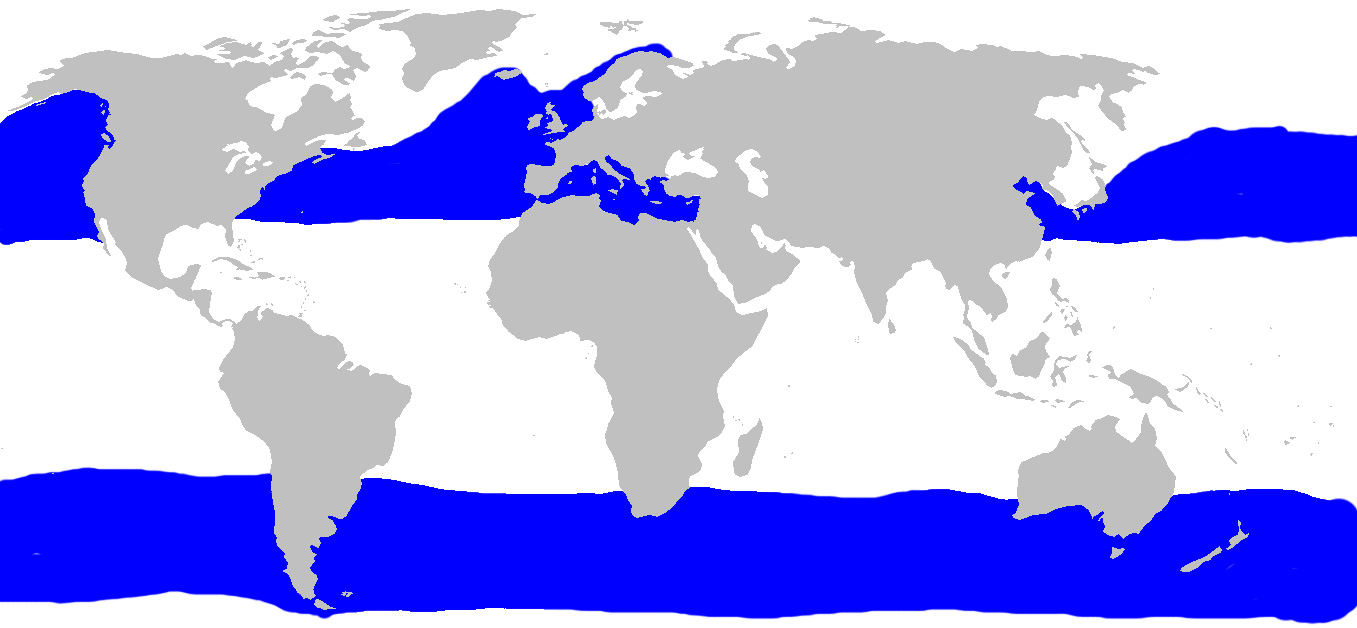
Animal description
The Basking Shark (Cetorhinus maximus) is a gentle giant of the oceans, holding the title of the second-largest living fish after the whale shark. Characterized by its massive size, the Basking Shark can reach lengths of up to 12 meters (about 39 feet), though some individuals have been reported to be even larger. This majestic creature is easily recognized by its broad, torpedo-shaped body, large gill slits that encircle the head, and a conspicuously wide mouth that can be up to 1 meter (about 3 feet) wide.One of the most distinctive features of the Basking Shark is its feeding method. Unlike many other large marine predators, it is a filter feeder. It swims with its mouth wide open, passively filtering water for plankton, small fish, and invertebrates. The gill rakers—long, slender filaments inside the gill slits—are specially adapted for this purpose, trapping food particles as water flows through the gills. This feeding behavior is often observed near the surface, giving the shark its common name as it appears to be "basking" in the sunlight.
The skin of the Basking Shark is thick and tough, with a texture often described as sandpapery due to the presence of dermal denticles—tiny, tooth-like structures. Coloration varies from dark grey to brownish, with lighter undersides, which helps in camouflage from both predators and prey.
Despite their immense size, Basking Sharks are known for their docile nature and pose no threat to humans. They are often observed swimming slowly, sometimes in pairs or small groups, but are also known to be solitary travelers. Their slow swimming speed, along with their surface feeding habit, makes them visible to observers and a fascinating subject for wildlife enthusiasts.
Basking Sharks are widely distributed across the world's temperate oceans, from the western Atlantic Ocean around Newfoundland and as far south as the Gulf of Mexico, to the eastern Atlantic from Norway to the western Mediterranean Sea, and throughout the Pacific Ocean. They undertake seasonal migrations in search of plankton-rich waters, often moving towards the coast in the summer and retreating to deeper waters in the winter.
Despite their large size and widespread distribution, Basking Sharks are considered vulnerable by the International Union for Conservation of Nature (IUCN). Their populations have been impacted by human activities such as overfishing, pollution, and habitat destruction. Historically, they were hunted for their liver oil, flesh, and fins, leading to significant declines in some regions. Conservation efforts are now in place in several countries to protect these gentle giants, including regulations on fishing, trade, and habitat protection measures.
The Basking Shark plays a crucial role in marine ecosystems, contributing to the health of plankton populations and serving as an indicator of ocean health. Its presence in marine waters continues to fascinate scientists and ocean lovers alike, making it a symbol of the ocean's mystery and grandeur.
Map of occurrence

New photos of animals
Top 10 animals
- Dolphin gull (Leucophaeus scoresbii)
- Diana monkey (Cercopithecus diana)
- Moustached guenon (Cercopithecus cephus)
- Galápagos tortoise (Geochelone nigra complex)
- Japanese macaque (Macaca fuscata)
- Stone loach (Barbatula barbatula)
- Russian tortoise (Testudo horsfieldii)
- Greek tortoise (Testudo graeca)
- Common flying dragon (Draco volans)
- Vendace (Coregonus albula)